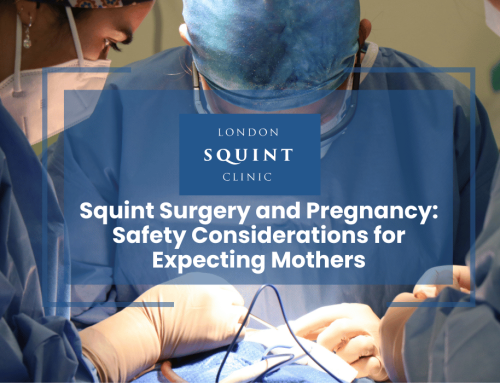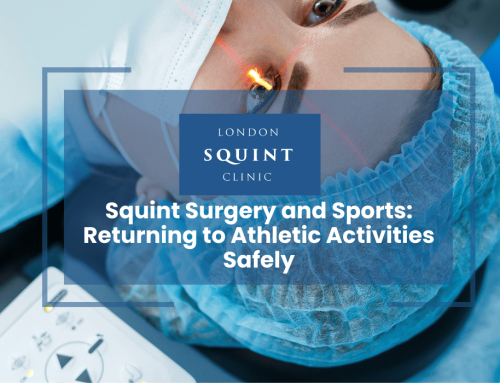Fiber Palsy: Partial Nerve Damage Eye Movement Problems
Fiber Palsy Management
- Partial nerve damage: Fiber palsy affects specific fibers within cranial nerves controlling eye movement, creating unique patterns of ocular misalignment that differ from complete nerve palsies.
- Diagnostic complexity: Diagnosis requires comprehensive assessment including detailed motility testing, prism measurements, and often neuroimaging to identify the underlying cause.
- Visual impact: Most patients experience complex patterns of double vision that vary with gaze direction, often leading to compensatory head postures and reduced quality of life.
- Treatment approach: Management typically begins with conservative measures (prisms, botulinum toxin) before considering surgical options for persistent cases.
- Recovery expectations: Recovery timelines vary significantly based on cause—microvascular cases may resolve within 3-6 months, while other etiologies may require intervention for permanent management.
- Specialist care: Prompt consultation with a squint specialist is essential for sudden-onset double vision, partial eye movement limitations, or persistent symptoms to ensure optimal outcomes.
Table of Contents
- Understanding Fiber Palsy: Causes and Mechanisms
- Diagnosing Partial Nerve Damage in Ocular Muscles
- How Does Incomplete Nerve Palsy Affect Vision?
- Treatment Options for Selective Muscle Weakness
- Surgical vs. Non-Surgical Approaches to Fiber Palsy
- Recovery Timeline and Management Strategies
- When to Consult a Squint Specialist for Fiber Palsy
Understanding Fiber Palsy: Causes and Mechanisms
Fiber palsy refers to a condition where specific fibers within a cranial nerve that control eye movement are damaged or dysfunctional, while other fibers within the same nerve remain intact. Unlike complete nerve palsies where the entire nerve function is compromised, fiber palsy represents a partial or incomplete nerve dysfunction affecting ocular motility.
The cranial nerves responsible for eye movement—the oculomotor (third), trochlear (fourth), and abducens (sixth) nerves—contain numerous fiber bundles that innervate different extraocular muscles. When selective fibers within these nerves are affected, patients experience unique patterns of eye movement limitations and misalignment that don’t conform to classic complete nerve palsy presentations.
Common causes of fiber palsy include:
- Microvascular ischaemia (often associated with diabetes or hypertension)
- Localised compression from tumours or aneurysms
- Demyelinating diseases like multiple sclerosis
- Traumatic injury with partial nerve damage
- Viral infections affecting nerve function
- Congenital anomalies in nerve development
The mechanism typically involves selective damage to specific axons within the nerve trunk, resulting in partial denervation of the corresponding extraocular muscles. This selective involvement creates complex patterns of eye misalignment that can be challenging to diagnose and manage without specialist expertise.
Diagnosing Partial Nerve Damage in Ocular Muscles
Diagnosing fiber palsy requires a comprehensive ophthalmological assessment that goes beyond standard eye examinations. The complex nature of partial nerve damage demands meticulous evaluation to differentiate it from complete nerve palsies and other causes of ocular misalignment.
The diagnostic process typically includes:
- Detailed ocular motility testing: Assessing the range and pattern of eye movement limitations in all nine cardinal positions of gaze
- Prism cover testing: Measuring the precise angle of misalignment in different gaze positions
- Forced duction testing: Determining whether limited movement is due to nerve dysfunction or mechanical restriction
- Neuroimaging: MRI or CT scans to visualise the course of the affected cranial nerve and identify potential causes of compression or damage
- Hess screen or Lees screen testing: Mapping the pattern of ocular muscle underaction and overaction
The hallmark of fiber palsy is an atypical pattern of eye movement limitation that doesn’t conform to the expected pattern of a complete nerve palsy. For instance, in a partial third nerve palsy, some extraocular muscles innervated by the oculomotor nerve may function normally while others show weakness.
Electromyography (EMG) and nerve conduction studies may occasionally be employed to assess the electrical activity of affected muscles, though these are less commonly used in routine clinical practice for ocular motor disorders.
How Does Incomplete Nerve Palsy Affect Vision?
Incomplete nerve palsy can significantly impact visual function in several ways, with symptoms varying based on which specific nerve fibers are affected and the degree of dysfunction. The most common visual disturbance is diplopia (double vision), which occurs when the eyes are misaligned due to selective muscle weakness.
Unlike complete nerve palsies where the pattern of double vision is predictable, fiber palsy often produces complex patterns of diplopia that may vary with gaze direction and head position. Patients frequently report that their double vision is worse when looking in certain directions or at specific distances.
Other visual effects may include:
- Abnormal head posture: Patients often adopt compensatory head positions to align their eyes and eliminate double vision
- Visual confusion: The brain receives two different images that it cannot fuse properly
- Reduced depth perception: Binocular vision may be compromised, affecting 3D perception
- Eye strain and fatigue: Constant effort to maintain single vision can lead to asthenopia
- Reading difficulties: Text may appear doubled or blurred, particularly with near work
In children, fiber palsy can potentially lead to amblyopia (lazy eye) if left untreated, as the brain may suppress the image from the affected eye to avoid double vision. This suppression, while eliminating diplopia, can lead to permanent visual impairment if not addressed promptly.
The impact on daily functioning can be substantial, affecting driving, reading, work performance, and overall quality of life. Many patients with fiber palsy report significant anxiety and reduced confidence in spatial navigation and social interactions due to their visual symptoms.
Treatment Options for Selective Muscle Weakness
Managing selective muscle weakness caused by fiber palsy requires a tailored approach based on the specific pattern of nerve involvement, severity of symptoms, and underlying cause. Treatment strategies typically follow a stepwise approach, beginning with conservative measures before considering surgical intervention.
Initial non-surgical management options include:
- Prism therapy: Specially designed prismatic lenses incorporated into glasses can help realign images and eliminate double vision for some patients
- Occlusion therapy: Patching one eye or using frosted tape on glasses can eliminate double vision, though this doesn’t address the underlying misalignment
- Botulinum toxin injections: Targeted injections into overacting muscles can help balance forces across the eye and temporarily improve alignment
- Vision therapy exercises: Specific exercises designed to improve control of eye movements and enhance fusion ability
For cases related to underlying medical conditions, treating the primary cause is essential:
- Blood sugar control for diabetic microvascular disease
- Blood pressure management for hypertensive patients
- Appropriate treatment for inflammatory or demyelinating conditions
At London Squint Clinic, we specialise in comprehensive assessment and personalised treatment plans for patients with complex ocular motility disorders including fiber palsy. Our approach focuses on restoring functional binocular vision and eliminating troublesome symptoms through evidence-based interventions tailored to each patient’s specific needs.
Surgical vs. Non-Surgical Approaches to Fiber Palsy
The decision between surgical and non-surgical management for fiber palsy depends on several factors including symptom severity, stability of the condition, patient age, and response to conservative measures. Both approaches have distinct advantages and limitations that must be carefully considered.
Non-surgical approaches are typically the first line of treatment and may be sufficient for mild cases or when the condition is expected to resolve spontaneously:
- Prism therapy offers a non-invasive solution but may be impractical for large-angle deviations or complex incomitant strabismus patterns
- Botulinum toxin injections provide temporary improvement (3-6 months) and can be useful diagnostic tools before committing to surgery
- Occlusion strategies eliminate symptoms but don’t correct the underlying misalignment
Surgical intervention becomes necessary when:
- Non-surgical methods fail to provide adequate symptom relief
- The deviation is large or complex
- The condition has stabilised (typically waiting 6-12 months from onset)
- The patient experiences significant functional impairment
Surgical approaches for fiber palsy are highly specialised and may include:
- Selective muscle recession or resection: Weakening or strengthening specific extraocular muscles to balance forces
- Muscle transposition procedures: Repositioning functioning muscles to compensate for paralysed ones
- Adjustable suture techniques: Allowing fine-tuning of alignment in the immediate post-operative period
- Combined vertical and horizontal muscle surgery: Addressing complex three-dimensional misalignments
The surgical approach for fiber palsy is typically more complex than for complete nerve palsies, requiring meticulous pre-operative assessment and planning. Success rates are generally good, with most patients achieving functional improvement, though perfect alignment in all gaze positions may not always be achievable.
Recovery Timeline and Management Strategies
The recovery timeline for fiber palsy varies significantly depending on the underlying cause, extent of nerve damage, and chosen treatment approach. Understanding the typical progression and implementing appropriate management strategies is crucial for optimising outcomes.
Spontaneous recovery potential:
- Microvascular causes (diabetes, hypertension): 3-6 months with good recovery potential
- Traumatic causes: Variable recovery over 6-12 months
- Compressive lesions: Limited spontaneous recovery unless the compression is relieved
- Congenital cases: Minimal spontaneous improvement expected
Post-surgical recovery timeline:
- Initial healing phase: 1-2 weeks with restriction of strenuous activities
- Stabilisation period: 6-12 weeks as muscles adapt to their new positions
- Long-term adaptation: Up to 6 months as the brain adjusts to new eye alignment
Effective management strategies during recovery include:
- Regular follow-up assessments: Monitoring for changes in alignment and symptoms
- Adaptive prism adjustments: Modifying prism prescriptions as alignment changes
- Vision therapy: Exercises to enhance fusion ability and binocular coordination
- Lifestyle modifications: Temporary avoidance of activities requiring precise depth perception
- Psychological support: Addressing anxiety and frustration associated with visual disturbances
For patients undergoing surgical correction, post-operative care includes lubricating eye drops, temporary activity restrictions, and scheduled follow-up appointments to assess alignment and make any necessary adjustments. Some patients may require prism glasses temporarily or permanently after surgery to fine-tune their alignment and maximise comfortable binocular vision.
It’s important to maintain realistic expectations throughout the recovery process, as some degree of residual misalignment may persist, particularly in gaze positions that are less critical for daily functioning.
When to Consult a Squint Specialist for Fiber Palsy
Knowing when to seek specialist care for suspected fiber palsy is crucial for timely diagnosis and optimal treatment outcomes. While some cases of partial nerve damage may improve spontaneously, expert assessment is essential to rule out serious underlying causes and develop an appropriate management plan.
You should consult a squint specialist promptly if you experience:
- Sudden onset double vision: Particularly if accompanied by other neurological symptoms
- Partial limitation of eye movements: Especially if the pattern doesn’t fit typical complete nerve palsy
- Progressive worsening of eye alignment or movement: May indicate an underlying compressive lesion
- Persistent double vision: Lasting more than 2-3 weeks without improvement
- Double vision following head trauma: Even if seemingly minor
- Abnormal head posture: Tilting or turning to maintain single vision
For patients with pre-existing conditions that increase the risk of ocular motor nerve damage, such as diabetes, hypertension, or autoimmune disorders, a lower threshold for specialist consultation is advisable.
Children presenting with unusual eye movement patterns or alignment issues should be evaluated promptly, as early intervention is critical for preventing amblyopia and ensuring normal visual development.
When selecting a specialist, look for:
- Fellowship training in strabismus and neuro-ophthalmology
- Experience with complex ocular motility disorders
- Access to advanced diagnostic equipment
- Surgical expertise in adjustable suture techniques and complex strabismus procedures
At specialist centres like ours, comprehensive assessment including detailed measurements, neuroimaging when indicated, and personalised treatment planning can make a significant difference in outcomes for patients with fiber palsy. Early intervention often leads to better functional results and prevents the development of compensatory mechanisms that can complicate later treatment.
Frequently Asked Questions
What is the difference between fiber palsy and complete nerve palsy?
Fiber palsy affects only specific fibers within a cranial nerve controlling eye movement, while complete nerve palsy involves dysfunction of the entire nerve. In fiber palsy, some muscles controlled by the nerve function normally while others show weakness, creating complex misalignment patterns that don’t match classic complete palsy presentations. This partial involvement makes diagnosis more challenging and often requires specialized testing to identify the specific pattern of muscle weakness.
How long does it take to recover from fiber palsy?
Recovery time for fiber palsy varies based on the underlying cause. Microvascular causes (diabetes, hypertension) typically show improvement within 3-6 months. Traumatic fiber palsy may recover over 6-12 months with variable outcomes. Compressive lesions have limited recovery unless the compression is relieved. Following surgical correction, initial healing takes 1-2 weeks, muscle position stabilizes over 6-12 weeks, and complete neural adaptation may take up to 6 months.
Can fiber palsy resolve on its own without treatment?
Some cases of fiber palsy can resolve spontaneously, particularly those caused by microvascular ischemia related to diabetes or hypertension, which often improve within 3-6 months. However, fiber palsy due to compressive lesions, congenital causes, or severe trauma is less likely to resolve without intervention. Even in cases with potential for spontaneous recovery, temporary treatments like prism glasses may be necessary to manage double vision during the recovery period.
What tests are used to diagnose fiber palsy?
Diagnosing fiber palsy requires specialized testing including detailed ocular motility assessment in all nine gaze positions, prism cover testing to measure misalignment angles, forced duction testing to distinguish between nerve dysfunction and mechanical restriction, Hess or Lees screen testing to map muscle underaction patterns, and neuroimaging (MRI/CT) to visualize the affected nerve and identify potential causes. These comprehensive tests help differentiate fiber palsy from complete nerve palsies and other causes of ocular misalignment.
How effective is surgery for fiber palsy?
Surgery for fiber palsy is generally effective at improving eye alignment and reducing double vision, with most patients achieving functional improvement. Success rates vary depending on the complexity of the case, with 70-85% of patients achieving single vision in primary gaze and reading positions after surgery. However, perfect alignment in all gaze positions may not always be achievable. Adjustable suture techniques improve outcomes by allowing fine-tuning of alignment in the immediate post-operative period.
Can children develop fiber palsy?
Yes, children can develop fiber palsy, though it’s less common than in adults. Causes in children include congenital anomalies in nerve development, birth trauma, viral infections, and rarely, tumors affecting cranial nerves. Early diagnosis and treatment are crucial in children to prevent amblyopia (lazy eye) and ensure normal visual development. Children with fiber palsy require prompt evaluation by a pediatric ophthalmologist or squint specialist experienced in managing complex ocular motility disorders in young patients.
What are the warning signs that fiber palsy might indicate a serious underlying condition?
Warning signs that fiber palsy may indicate a serious underlying condition include progressive worsening of symptoms, associated neurological symptoms (headache, numbness, weakness), involvement of multiple cranial nerves, absence of risk factors for microvascular causes (diabetes/hypertension), pain around or behind the eye, pupil abnormalities accompanying eye movement limitations, and no improvement after 3 months. These red flags warrant urgent neuroimaging and comprehensive neurological evaluation to rule out conditions like aneurysms, tumors, or demyelinating diseases.
Find out if you are suitable for Double Vision Treatment
Not everyone is eligible for double vision surgery.
Find out if you could benefit from this life-changing surgery by taking the quick self-suitability quiz below:
Our most popular procedures

Hello, I’m Nadeem Ali
I’m one of the few eye surgeons in the world with 100% focus on Squint and Double Vision Surgery.
I have 24 years of eye surgery experience, and worked for 13 years as a Consultant at London’s renowned Moorfields Eye Hospital.
In 2023, I left the NHS to focus fully on treating patients from across the world at the London Squint Clinic. You can read more about me here.
There’s lots of information on the website about: squint surgery, double vision surgery and our pricing.
The most rewarding part of my job is hearing patients tell me how squint or double vision surgery has changed their lives. You can hear these stories here.
Mr Nadeem Ali
MA MB BChir MRCOphth FRCSEd(Ophth)





